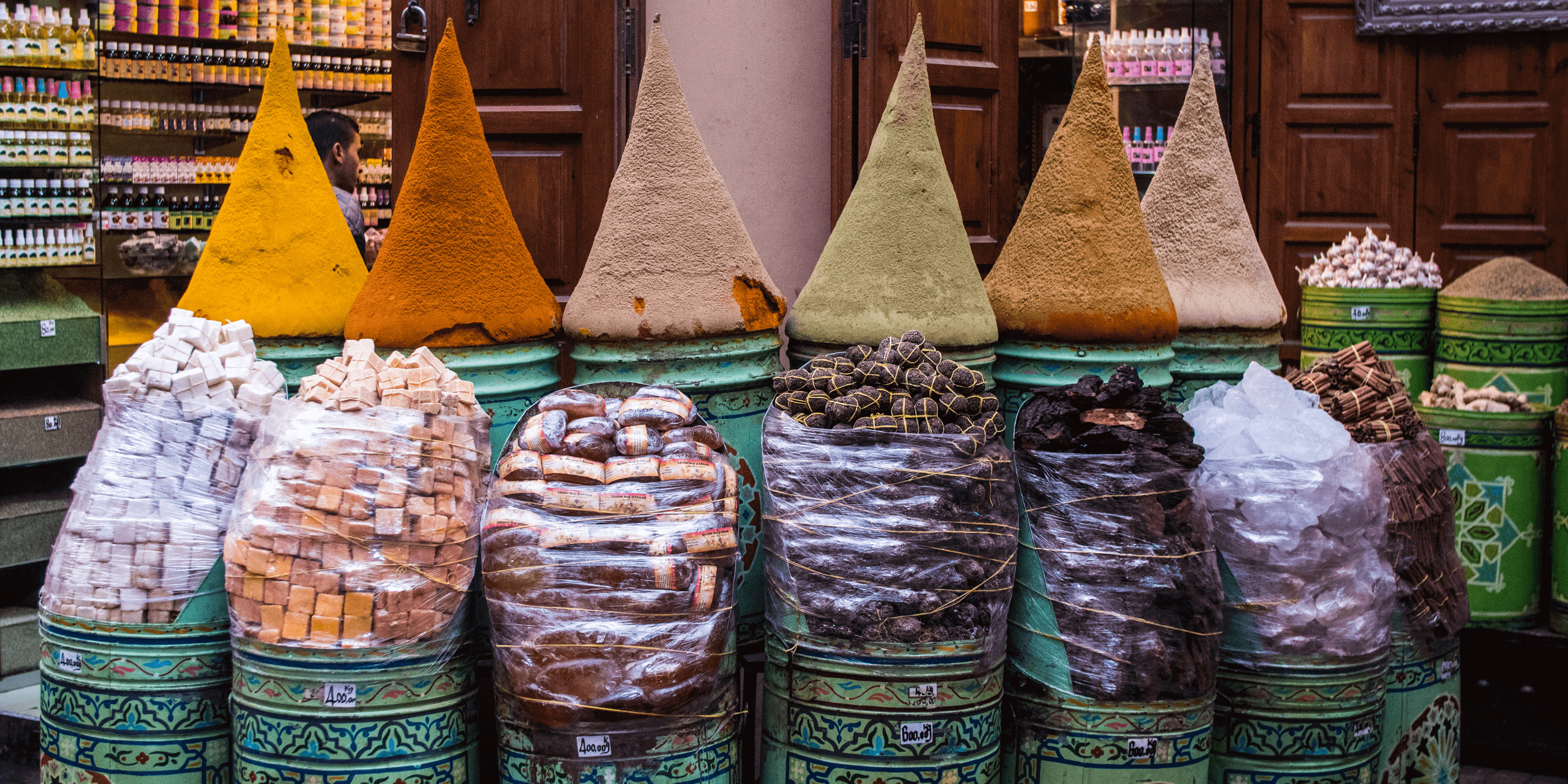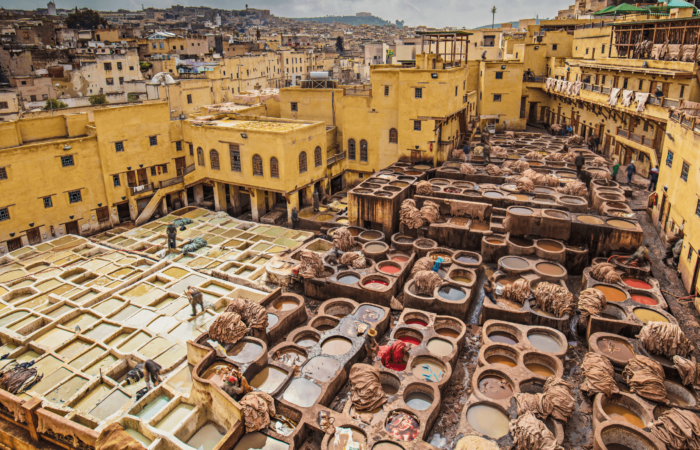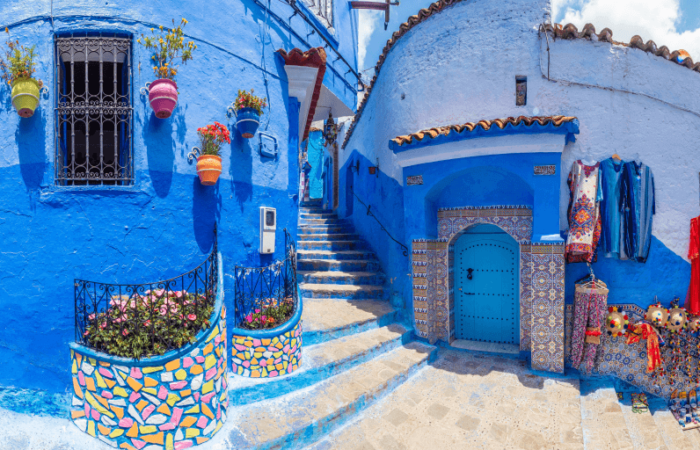Moroccan Spice Magic: A Taste Journey Like No Other
Common spices used in Moroccan cuisine
You’ve probably heard of the well-known Moroccan cuisine if you enjoy trying new and savory foods. Moroccan cuisine delivers a remarkable culinary experience that will have your taste buds dancing with ecstasy. It is renowned for the distinctive spices and herbs it contains.
Morocco’s specialty dishes and treats are distinguished by a unique blend of flavorings influenced by Andalusian, Berber, and Mediterranean cuisine.
The country has special spices, such as mint from Meknes and saffron from Taliouine, in addition to the spices imported for centuries.
Traditional Moroccan cuisine features fresh spices, including coarse salt, pepper, turmeric, and ginger. Cinnamon, cumin, saffron, paprika, and white pepper are typical spices used in Moroccan cuisine. For a blend of ground spices, Ras El Hanout is a popular choice, which translates to “head of the shop” and includes nutmeg, cinnamon, turmeric, ginger, mace, anise, cardamom, and a variety of peppers.
Ginger: The Spicy Root.
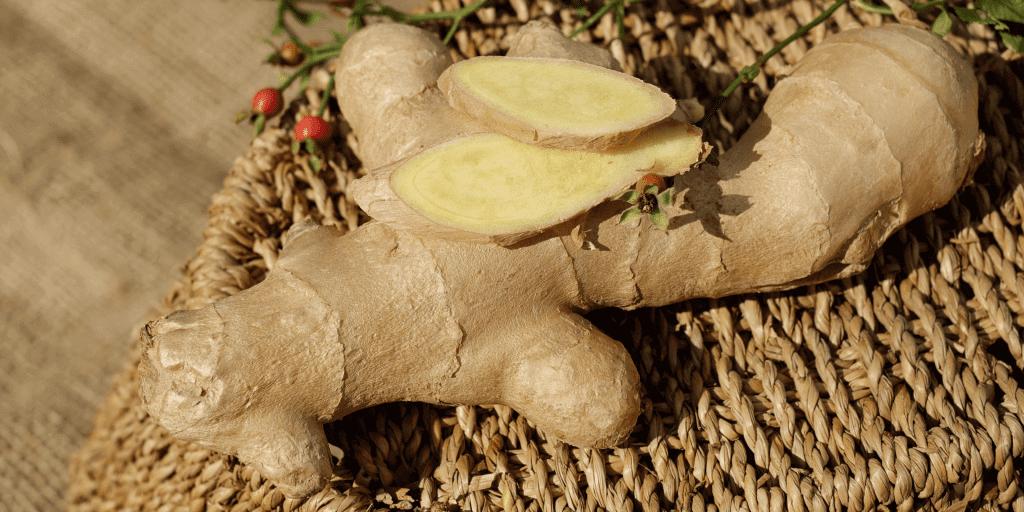
Ginger is a spicy root that’s commonly used in Moroccan cuisine. It has a warm, spicy flavor and is often used in Moroccan tea and desserts.
Ginger’s culinary applications include adding flavor and depth to various Moroccan foods. Ginger is a critical component in Moroccan cooking. Tagines, stews, and soups frequently contain it. Tea and pastries also often have it. Popular Moroccan ginger-infused mint tea is sometimes served with pastries or sweets. In addition to gingerbread and ginger snaps, ginger may also be used to produce ginger ale.
Ginger is a tropical plant; thus, growing, it calls for warm temperatures and high humidity. It may be cultivated in the ground or in containers, and it matures in 8 to 10 months. Avoid exposing ginger to direct sunlight while storing it, and keep it in a relaxed, dry environment. It can also be dried or frozen to store ginger for a long time.
Benefits of Ginger for Health: Ginger has been used for several diseases naturally for many years. It contains anti-inflammatory characteristics that can help treat osteoarthritis and rheumatoid arthritis by reducing pain and swelling. Additionally, it has been demonstrated to lessen nausea and vomiting brought on by chemotherapy, surgery, and morning sickness. By lowering gas, bloating, and constipation, ginger can help with digestion. Additionally, it has been connected to enhanced brain function and could even aid in reducing cholesterol levels, Make sure to go for a pale yellow tone while buying. Ginger darkens and gets spicier as it gets older.
Gouza Sahrawia (Or nutmeg).
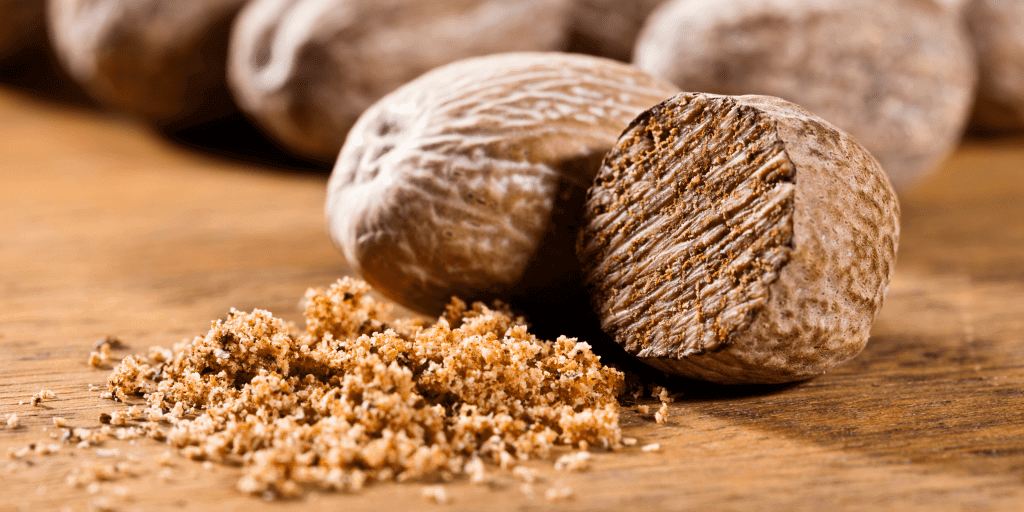
Moroccan cuisine frequently uses the spice nutmeg, also known as “Gouza Sahrawia,” in Morocco, especially on special occasions. Even though Nutmeg is available as a powder, many Moroccans buy it dried and grate it themselves whenever they need it. This contributes to keeping the flavor’s potent, warm, and subtly sweet intensity high.
In Moroccan cuisine, Nutmeg is a common ingredient in sweets, pastries, and savory tagines. To generate various flavor profiles, it is frequently combined with other spices like cinnamon, ginger, and cumin. Additionally, Nutmeg can be used as a flavoring for soups, stews, and vegetables.
Nutmeg has long been used for its therapeutic benefits and culinary usage. It has been demonstrated to possess anti-inflammatory, antibacterial, and antioxidant properties, and it might even have pain-relieving effects. It’s crucial to remember that taking vast quantities of Nutmeg can be poisonous and result in unpleasant side effects like nausea, vertigo, and hallucinations.
Nutmeg is a significant spice in Moroccan cooking, giving a range of recipes depth and complexity. Moroccans may ensure they’re getting this adored spice’s full flavor and potency by grating fresh Nutmeg.
Saffron: The Most Expensive Spice.
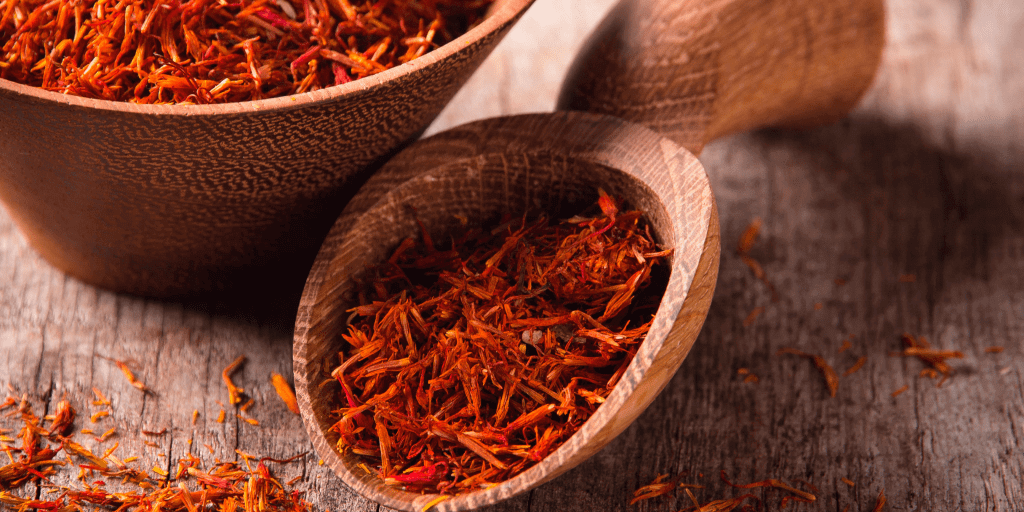
Moroccan cuisine holds saffron in high regard because of its vibrant color and delicate flavor. It’s frequently used to enhance flavor and give foods like tagines, soups, and stews a yellow-orange tint. However, because of its labor-intensive manufacturing technique, saffron is also the priciest spice in the entire world.
The stigma of the crocus flower, which must be meticulously hand-picked and dried to create the spice, is where saffron is from. One gram of saffron is made from an estimated 140 saffron blossoms, making it a tremendous labor- and time-intensive procedure. As a result, saffron can be very costly, with prices per ounce exceeding hundreds of dollars.

Saffron may be pricey at grocery stores in the United States and Europe, but it is typically less priced in Morocco, where it is grown. Saffron can be bought at Moroccan markets by the gram or in tiny quantities, making it more affordable for home cooks who want to include this coveted spice in their recipes.
Saffron is a common ingredient in Moroccan cuisine, which ranges from savory tagines to sweet pastries. To generate various flavor profiles, it is frequently used with other spices like cumin, cinnamon, and ginger. The finest saffron in the world, Moroccan saffron is regarded for its superior quality.
Saffron is a significant and highly prized spice in Moroccan cooking, giving a range of dishes color and flavor. It may be pricey, but due to its distinctive taste and labor-intensive manufacturing process, it is a valued ingredient in many kitchens worldwide.
The supreme spice, Cumin.

One of the most popular spices in Moroccan cuisine is cumin, which has a warm, earthy flavor with a little bitter aftertaste. It is frequently called the “King of Spices” and utilized in many recipes, including tagines, stews, and soups.
Cumin is frequently combined with other spices, such as cinnamon, ginger, and paprika, in Moroccan cooking to produce complex taste combinations. Additionally, it is commonly employed as a spice for cereals, meats, and vegetables.

Cumin is a crucial spice in Moroccan cooking since it gives various foods depth and flavor. It is valuable in many kitchens worldwide because of its health advantages and adaptability.
Cumin has a great flavor in addition to various health advantages. Due to its high antioxidant content, it has been demonstrated to help manage blood sugar levels and may facilitate digestion. Iron-rich cumin may aid in boosting the immune system.
Bay Leaves: A Versatile and Tasty Kitchen Accoutrement.
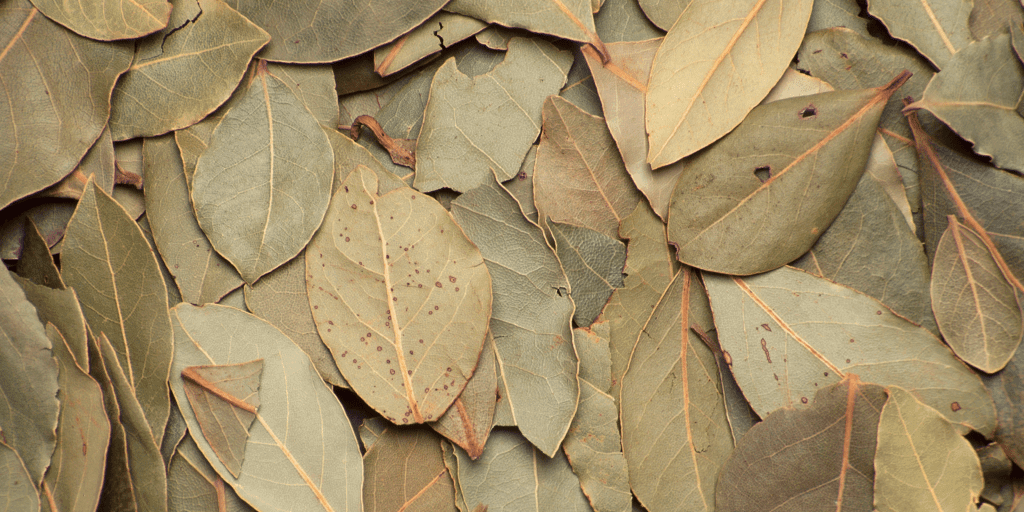
Tagines and stews from Morocco benefit from the versatile and flavorful use of bay leaves. These leaves are mainly used for their scent, giving the food a mild herbal flavor. They can be used dry and infused, boiled into the sauce, or incorporated into the dish whole.
Generally speaking, bay leaves are a valuable and adaptable element in Moroccan cooking, bringing flavor and fragrance to various meals. They are a flavorful and aromatic complement to any kitchen, whether they are used whole or infused, fresh or dried.
Bay leaves are thought to offer therapeutic benefits in addition to their usage as flavoring agents. They have been employed in conventional medicine to treat digestive problems like cramping. Bay leaves can be used in a hot bath or made into a tea to take advantage of these soothing effects.
Harissa.
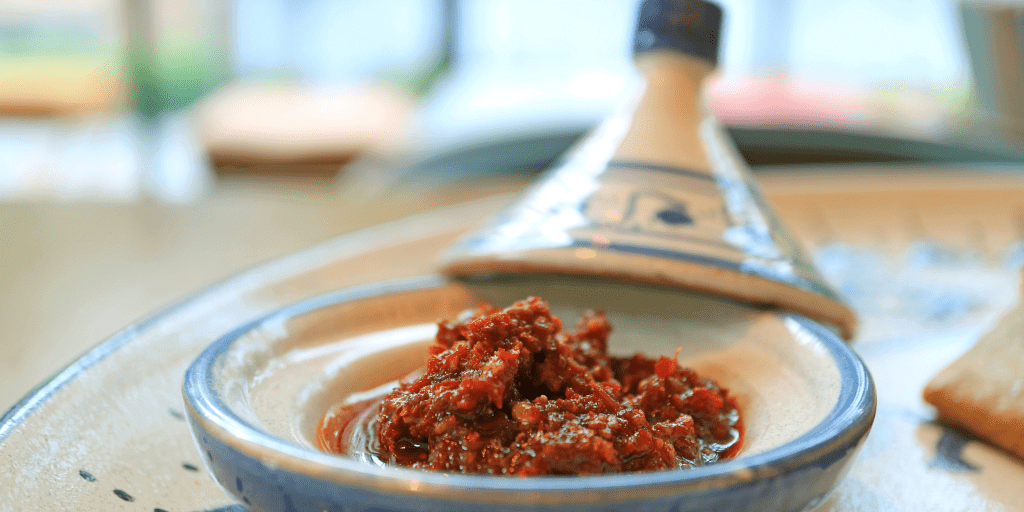
Dried chili peppers, garlic, caraway seeds, cumin, and olive oil are combined to create the savory paste known as harissa. It is a fundamental component of North African food, and Moroccan cooking uses it the most frequently. This thick, hot paste gives a variety of foods a peppery, smokey taste.
To make a marinade, harissa is frequently combined with olive oil or other liquids. It is frequently used as a spice for meat and vegetables. Like hot sauce, it may also be used as a condiment to give sandwiches, soups, and stews a fiery kick.
Harissa may be discovered in the spice aisle of most supermarkets in tubes or jars of vibrant colors. Pay attention to packages with yellow or orange packing. Check the label for a spiciness indicator before purchasing harissa because the spice level might vary.
In Moroccan cooking, harissa is a beautiful and adaptable condiment that adds flavor and heat to various foods. Anyone who likes spicy cuisine must have it, whether they use it as a seasoning or sauce.
Ras El Hanout.
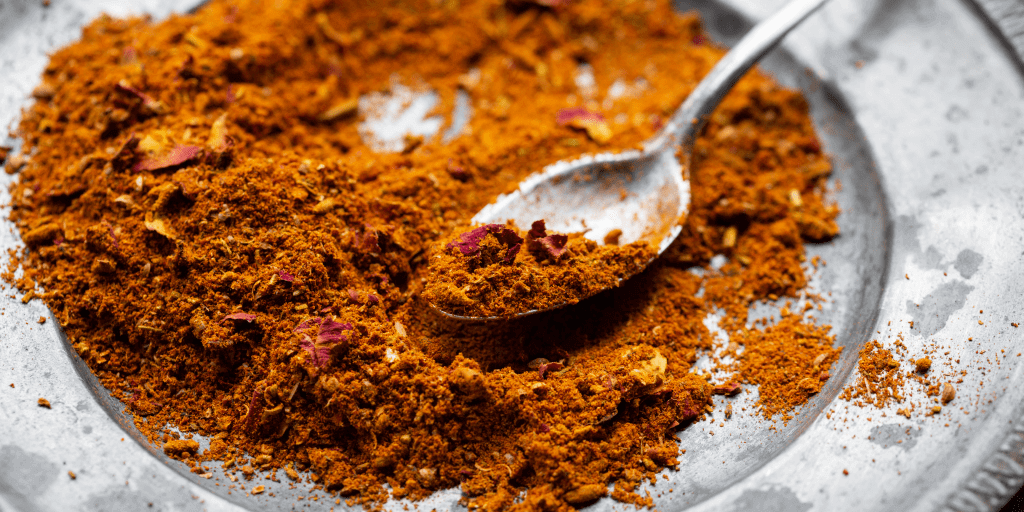
A popular and vibrant spice blend known as Ras El Hanout is utilized in Moroccan cooking. It is clear from the name, which translates to “head of the shop,” that only the finest spices were utilized to create the combination. The Ras El Hanout recipe can change based on the mix used and is frequently passed down from generation to generation.
Paprika, cardamom, cumin, clove, cinnamon, coriander, nutmeg, aniseed, dried ginger, peppercorns, and turmeric are common spices used in the combination. Up to 35 distinct herbs can be found in specific mixes, including entire spices, dried roots, and dried leaves.
Ras El Hanout’s flavor might change depending on where you get it. Due to the presence of paprika, the combination often has a vibrant red color and warming rather than a searing taste character.
Ras El Hanout is frequently used in rice, couscous, and other grain-based foods to flavor meat, fish, and vegetables. It’s a versatile spice mixture that gives any recipe depth and complexity. If you want to explore Moroccan food, Ras El Hanout is a fantastic spice mixture.
Make your next meal with Moroccan seasoning!
Including Moroccan spices in your food is a fantastic way to give it more depth and complexity. Making your spice mixtures using straightforward items like cumin, paprika, and coriander may be a terrific method to create authentic Moroccan flavors, even though not all pre-made Moroccan spice mixes sold at grocery shops will be of excellent quality.
Moroccan pastes, like harissa, may give food a fiery, smokey taste and are widely accessible at many grocery stores. Experimenting with Moroccan spices and flavors may be enjoyable, regardless of your level of culinary expertise. Always be bold and experiment with different spice blends in your food.
The Meaning and History of Moroccan Spices
Since ancient times, traders have brought exotic spices like cinnamon, ginger, and turmeric to the ports of Morocco. These spices have become an integral part of Moroccan culture. With the emergence of distinctive spice mixes and taste profiles in each region, these spices eventually evolved into an essential component of Moroccan cuisine.
Moroccan spices are praised for their richness and complexity and are seen as an essential part of the nation’s cultural legacy.
Moroccan Seasoning

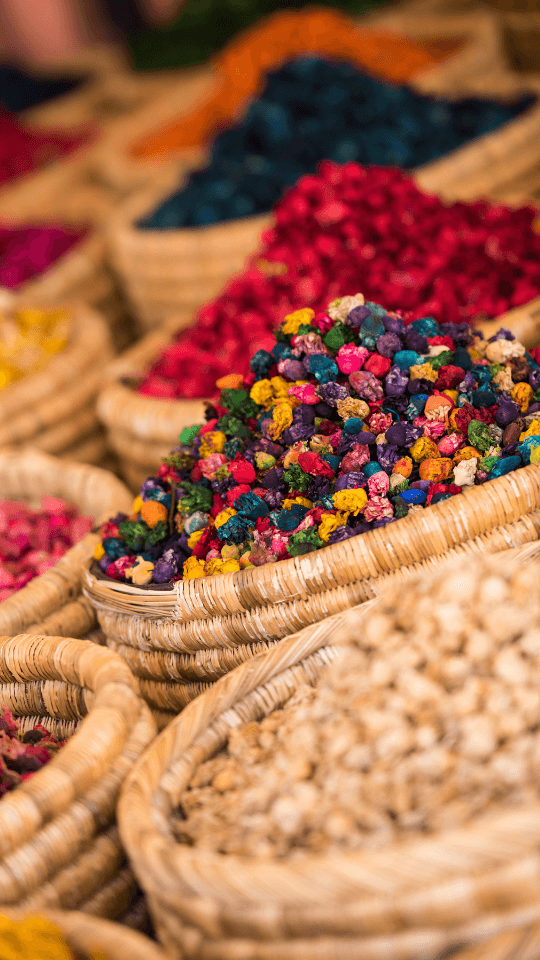

What is seasoning from Morocco?
A mixture of spices frequently used in Moroccan cooking is known as Moroccan seasoning. Cinnamon, cumin, coriander, ginger, paprika, and turmeric are common ingredients.
The mix may change depending on the location and the meal being served.
How may Moroccan seasoning be used in recipes?
Tagines, couscous, grilled meats, roasted vegetables, and soups are a few of the foods that might benefit from the flavoring of Moroccan spice.
It is also a valuable tool as a dry rub for chicken, lamb, or fish.
Where can I buy Moroccan seasoning?
Moroccan seasoning is typically located in supermarkets’ international food departments or spice aisles. Specialty spice shops and other merchants offer it online as well.
However, remember to barter. Prices are a little high due to the practice of bargaining. The spices could even be available for a third of what they are being marketed for.
Are Moroccan spices hot?
Moroccan spice typically has a somewhat fragrant taste and is not very hot. Although most mixes are moderate, some may have a little heat by adding cayenne pepper or chili powder.
How should Moroccan seasoning be kept in storage?
Moroccan seasoning should be kept in an airtight container in an excellent, dry location away from direct sunlight.
Can vegetarian or vegan meals utilize Moroccan seasoning?
Moroccan seasoning may flavor vegetarian or vegan recipes like lentil stew or roasted veggies.
Does Moroccan seasoning include gluten?
The majority of Moroccan seasoning mixes are gluten-free, but it’s vital to check the label to make sure there aren’t any additional gluten-containing components.
What spices are famous in Morocco?
Morocco is well known for a variety of well-known spices. This is one of the main motives for why so many people visit Morocco.
While everyone has a different view on which herbs are the most well-known in Morocco, ginger (skinjbir), turmeric (quekoum), and cumin (kamoon) are the top three.
What traditional spices are used in Morocco?
Cumin, black pepper, ginger, and turmeric are the four most fundamental spices used in Moroccan cuisine. Saffron, paprika, cayenne, chili powder (harissa), cinnamon, and occasionally white pepper are frequently used in numerous recipes. Additionally, certain unique spice mixtures are frequently used in Moroccan cuisine.
Which ten spices are most popular in Morocco?
Cayenne (felfla), cinnamon (karfa), turmeric (quekoum), ginger (skinjbir), black pepper (elbezar), aniseed (nafaa), seaseme seeds (jinjelan), cumin (kamoon), paprika (felfla hlouwa), and saffron (zafrane) are the top 10 spices used in Moroccan cooking.
Other Uses for Spices in Morocco.
When you think about Moroccan spices, you may quickly turn to the mouthwatering tastes and scents of tagine and couscous. However, Moroccan spices have a long history and are used for various purposes outside the kitchen.
Spices Used for Medicine.
Spices’ therapeutic and medical benefits are employed in a few Moroccan settlements. For instance, garlic is prized for its healing and cleansing properties, saffron is said to help with digestion and circulation, and ginger is thought to have mood-enhancing properties. While anise and dill are said to help with digestive difficulties, sea salt is also well-recognized for its rejuvenating qualities.
Although spices have been used for generations as natural cures for various illnesses, it is still advisable to get the advice of a healthcare provider before taking them as medicines.
Some of the health advantages of Moroccan spices include:
Inflammatory-reducing qualities.
Numerous Moroccan spices, including turmeric, ginger, and cinnamon, have anti-inflammatory qualities that can help lower bodily inflammation and fend against chronic illnesses.
Digestive advantages.
Moroccan spices are renowned for promoting healthy digestion and can assist with problems including bloating, gas, and constipation. People have used spices like cumin and ginger to aid digestion for millennia.
Oxidizing qualities.
Spices with high antioxidant content, including saffron and turmeric, can assist the body to fend off free radicals and avoid oxidative stress.
Anti-cancer attributes.
Turmeric and ginger, two Moroccan spices with anti-cancer effects, can help stop the growth and spread of cancer cells.
Beauty Products Made with Moroccan Spices:
Moroccan spices are also used in beauty products for their skin and hair benefits. Argan oil, a popular ingredient in many beauty products, is derived from the argan tree’s kernels native to Morocco.
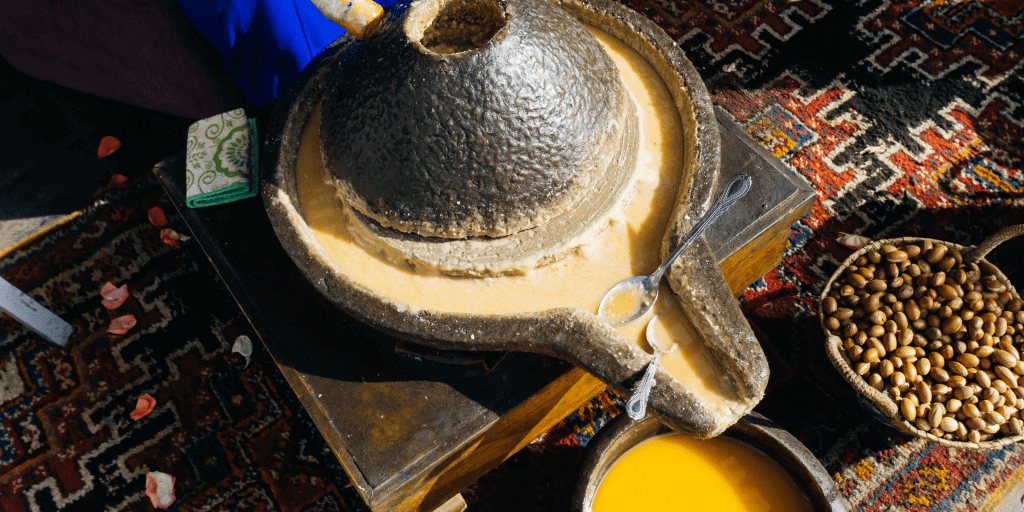
It’s known for its moisturizing and anti-aging properties. Rhassoul clay, another Moroccan beauty staple, is used in face masks for its cleansing and exfoliating properties. Cinnamon and cloves are also used in exfoliating scrubs for their skin-boosting benefits.
Frequently Made Moroccan Food with Spices
t well-liked Moroccan meals that include spices are listed below:
Slow-cooked stews called tagines are frequently created with meat, vegetables, and Moroccan spices. It is a mainstay of Moroccan cuisine and is named after the clay pot it is cooked in. Moroccan food is renowned for its delicious tagines, couscous dishes, and stews.
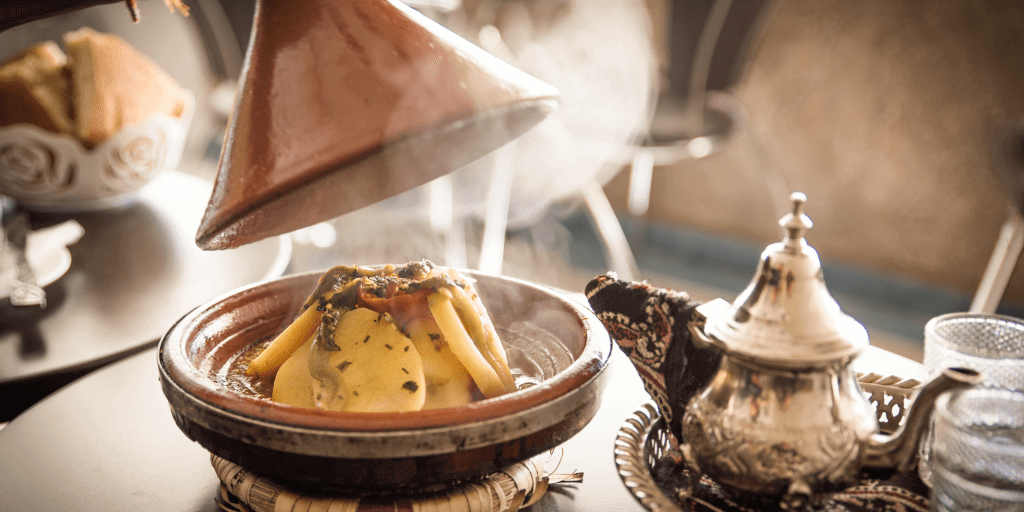
Couscous
A North African delicacy called couscous is created from tiny semolina balls that are boiled. It is frequently served with meat, vegetables, and Moroccan seasonings.
Arabic Soup
Vegetables, chickpeas, and Moroccan spices are used to make substantial Moroccan soup. It is a well-liked comfort meal in Morocco and is frequently served with bread.
Moroccan meatballs known as kefta are prepared using ground lamb or beef and regional seasonings. It is a typical street meal in Morocco and is frequently served with tomato sauce.
Guidelines for Using Moroccan Spices in Food
It might does it not have to be. Here are some pointers for using Moroccan spices in recipes:
frying spices
Spices can have their flavor and scent improved by roasting. Place the herbs in a dry pan and preheat it over medium heat. They should be aromatic after a bit of toasting.
combining spices
A mixture of spices, like Ras El Hanout, is necessary for many Moroccan cuisines. Making your mix is an option, as is purchasing pre-made blends from specialist shops.
combining spices with food
Each Moroccan spice complements particular items nicely. For instance, ginger and cinnamon are frequently used in sweet meals, whereas cumin and coriander are frequently used with meat.
A journey to Morocco is guaranteed to be a satisfying experience for your senses, whether you’re shopping for culinary spices or discovering their various applications. To experience the nation’s culinary tradition and spice trade firsthand, consider attending a cooking class, outing, or a tour with a guide. Don’t hesitate to contact one of our tour representatives for more information!

